Let's take the mystery out of CBD Oil!
What the heck is CBD Oil and why does it matter? Let's take the mystery out of CBD!
Cannabidiol (CBD) oil has become the hot new product in states that have legalized recreational and medical marijuana.
The non-intoxicating marijuana extract is being credited with helping treat a host of medical problems -- everything from seizures to anxiety to inflammation to sleeplessness.
But experts say the evidence is scant for most of these touted benefits.
Cannabidiol, or CBD, is extracted from the flowers and buds of marijuana or hemp plants. It does not produce intoxication; marijuana's "high" is caused by the chemical tetrahydrocannabinol (THC).
What is Cannabis Oil?
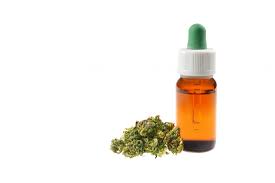 Cannabis oil is a concentrated extract obtained by extraction of the dried flowers or leaves of the cannabis plant. It is not actually an oil, but derives its name from its sticky and oily appearance. The purpose of producing cannabis oil is to make cannabinoids and other beneficial components, such as terpenes, available in a highly concentrated form.
Cannabis oil is a concentrated extract obtained by extraction of the dried flowers or leaves of the cannabis plant. It is not actually an oil, but derives its name from its sticky and oily appearance. The purpose of producing cannabis oil is to make cannabinoids and other beneficial components, such as terpenes, available in a highly concentrated form.
Similar to other herbal extracts, the chemicals in cannabis oils vary depending on how the extract is made and what chemicals were in the plant to begin with.
Cannabis plants produce thousands of compounds but the most well recognized belong to a class called cannabinoids. There are several cannabinoids but the two that are most well-known among consumers are THC (tetrahydrocannabinol) and CBD (cannabidiol).
THC is the primary psychoactive compound in marijuana and it is what people are searching for when they want a product that gives them a "high." Unlike THC, CBD isn't known to cause psychoactive effects, and is therefore attractive to those who want to avoid the high but who believe there are other benefits of CBD.
CBD products that don't contain THC fall outside the scope of the U.S. Drug Enforcement Agency's (DEA) Controlled Substances Act, which means CBD products are legal to sell and consume as long as they don't have THC. That's likely one of the reasons why CBD products, including CBD oil, are becoming more socially acceptable and increasingly popular. In 2016, Forbes reported that CBD products are expected to be a $2.2 billion industry by 2020.
In recent years, a large, unregulated market for CBD (cannabidiol) oils has emerged. These products are typically concentrated extracts from fiber-type cannabis strains (hemp), which contain large concentrations of CBD, but negligible of THC.
In most countries it is forbidden to create oil from cannabis, because cannabis is a controlled substance (i.e. illegal drug). However, CBD, unlike THC, is not a controlled drug, and regulations are minimal by comparison in many places around the world. This has led to the appearance of numerous CBD-rich extracts on the international market. Most of these extracts contain low levels of CBD and high levels of CBD-acid, the natural constituent of the fresh cannabis plant before it is heated.
How is cannabis consumed?
| Consumption Method | Product Format | Affect and/or Application |
| Smoke – a cannabis pipe or a joint | Flowers, Concentrates, Wax, Dabs, Hash | A quick way to get stoned and then sober up |
| Vape – cannabis oil vape pen or a dab rig | Oils, Dabs, Wax | A quick way to get stoned and then sober up |
| Eat – put it in whatever you want! | Oils, flowers and concentrates prepared for food production | A slow way to get stoned and stay stoned for a long time |
| Topical – good for the body, good for the soul | Oils, Creams, Salves, Butters, Lotions |
|
CBD and THC
 Phytocannabinoids occur naturally in cannabis plants. There are fifteen subclasses of such compounds. THC, cannabidiol, and cannabidivarin are some examples of the same.
Phytocannabinoids occur naturally in cannabis plants. There are fifteen subclasses of such compounds. THC, cannabidiol, and cannabidivarin are some examples of the same.
The pop-culture favorite of cannabinoids may in fact be Tetrahydrocannabinol, or THC as it is colloquially known, due to its psychoactive nature.
Endocannabinoids are organically produced by the human body, generated by the endocannabinoid system. Endocannabinoids have been found to help in the regulation of sleep, pain and the responses of the immune system. Cannabis scientists also have been investigating the role of physiological cannabinoids in tissue recovery and disease.
Cannabidiol (CBD) is a subclass of Phytocannabinoids and one among one twenty cannabis compounds. It is hailed for its ability to be meditative, without causing a euphoric high. This non-addictive cannabinoid has been the talk of the town and the core of numerous experiments. The anti-inflammatory properties of CBD have inspired the marketing of its by-products, such as CBD oil, for pain relief and relaxation.
How does cannabidiol help relieve pain?
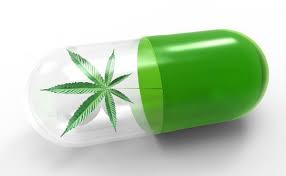 In general, the human body has specific sites that are allotted to cannabinoids, called the cannabinoid receptor sites. Receptors are mechanisms to which the cannabinoids naturally present in the human body as well as the ones artificially ingested/ applied attach themselves. There are two kinds of receptors for cannabinoids, the CB1, and the CB2. While the CB1 receptors are present in the brain, the CB2 receptors can be found in the immune system.
In general, the human body has specific sites that are allotted to cannabinoids, called the cannabinoid receptor sites. Receptors are mechanisms to which the cannabinoids naturally present in the human body as well as the ones artificially ingested/ applied attach themselves. There are two kinds of receptors for cannabinoids, the CB1, and the CB2. While the CB1 receptors are present in the brain, the CB2 receptors can be found in the immune system.
Cannabinoids can be agonists, inverse agonists or inhibitors. The agonists simply stimulate a bodily function once they adhere to their respective receptors. Inverse agonists associate themselves with the same receptors as agonists, while causing a chemical reaction opposite to the ones caused by agonists. Inhibitors simply stop a chemical reaction or response once bound to their receptors.
Cannabidiol is unique, as it does not work with the CB1 or CB2 receptors. It passively influences the working of the Endocannabinoid system, regulating the reception of pain, immune system functions and the process of falling and staying asleep. CBD also amplifies the effect of all cannabinoids that attach to the CB1 receptors.
The Benefits of CBD Oil Epilepsy
Cannabidiol has been widely accepted as an anti-psychotic family member of the cannabis family. Ongoing studies have involved inspecting the use of CBD in helping victims of Post-Traumatic Stress Disorder.
CBD oil has definitely proven to subdue symptoms of anxiety, to the extent that the US Food and Drug Administration has approved the use of Epidilolex, a patented CBD medicine, for the treatment of epilepsy and the repetitive seizures induced by the affliction.
Similarly, CBD oil can be effective in the treatment of stress-related bodily ailments.
Multiple Sclerosis
Multiple Sclerosis is a condition in which the immune system mistakenly reacts abhorrently to healthy cells and organs. Also known as an autoimmune disease, multiple sclerosis causes reoccurring spasms and enduring pain, for those affected. Although the effect is modest, CBD oil, acting as an anticonvulsant, can help in mitigating the number of spasms caused, as well as the resulting pain.
Arthritics
One of the most profound uses of cannabidiol oil is for the relief of arthritic pain. There are two kinds of arthritis, rheumatoid and osteoarthritis, both resulting in swelling and stiffness in joints. Scientific studies have documented that the application of CBD oil can help assuage the pain caused by inflammations. Results have been encouraging.
Autism
Of the many developmental disorders, autism and its associated spectrum of disorders are perhaps the most pervasive. Autistic children suffer from insomnia, irritability and a loss of appetite, to name a few. Practitioners have been experimenting with the use of CBD oil in curtailing the social anxiety and psychological manifestations vicariously caused in victims of autism.
Cramps, Chronic Pain and Addiction
There have been a number of studies investigating the conceivable part of CBD oil in vanquishing pain of all proportions, be it menstrual cramps or pain of a chronic magnitude. CBD oil maybe a good tolerance-builder, an agent that enhances the body’s ability to cope with and be resilient to pain.
It is clear that CBD oil has a number of functions in pain relief and regulation. However, there are a few arguments that are worth considering. One is the use of CBD oil on children. Although proven to be a player in autism-symptom mitigation, the influence of CBD oil on the developing brain has yet to be deemed unintrusive.
CBD oil might also cause fatigue, diarrhea and sudden weight gain/weight loss, depending on each individual’s ability to metabolize or reaction to the substance.
To conclude, the increasing use of CBD oil as a therapeutic substance has inspired many applications. However, caution must be exercised when choosing CBD as a wholesome alternative to allopathic medicine for pain.
Read more about in our article A Beginners Guide to Tinctures
Joints, Blunts and Spliffs, Oh My!
In this post we’re going to talk about the differences between a joint, a blunt and a spliff and how to roll them.
If you’re new to cannabis, there are three broad categories by which to delineate rolls (substantiated by withstanding popularity): joints, spliffs, and blunts. Each can be defined by their content (cannabis-tobacco ratio) as well as the paper material (tobacco, hemp, wood pulp, etc.).
This minimalist, easily accessible tried-and-true consumption method, still reigns supreme globally and, combustion aside, the creative potential and skill required to craft a functional roll is celebrated among many cannabis enthusiasts.
What’s Inside: The Differences between Joints vs. Blunts vs. Spliff
The basic difference between joints and blunts are that they only contain cannabis, but blunts are rolled with tobacco paper (distinguishable by their thicker weight and dark brown color) whereas joints are rolled with lighter, partially translucent papers.
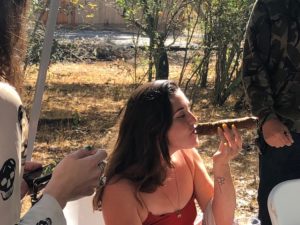
Joints often include a paper filter known as a crutch, which adds stability to the roll and allows you to enjoy your joint without burning your fingertips.
The difference between a joint or a blunt and a Spliff is that spliffs are essentially hybrids, part tobacco and part cannabis.
They’re rolled in the same paper spectrum as joints and also often include a crutch. The three rolls most notably differ by experience.
Joints are joints – so, 100% cannabis of the strain you prefer, prepared properly and rolled appropriately, a joint is the Gold Standard for smoking weed.
Blunts are generally considered to be the heaviest hitters due to the interaction between the tobacco paper and cannabis, contrasting strains with indica effects (or complementing sativa-bent strains).
Tobacco provides an initial head rush and energetic physical buzz (similar to coffee), which precedes the effects of cannabis. This sensation is most notable in spliffs because of the loose tobacco presence.
Paper, Paper, which is the Best? More about Joints, Blunts and Spliffs
Paper choice is paramount to your smoking experience, impacting the product’s quantity (which is contingent on paper size), flavor (tobacco papers are notably sweeter than hemp paper), and burn (thicker papers tend to burn slower than thinner papers). Consumers utilize loose papers to roll joints and can use both loose papers and pre-rolls to make spliffs, the latter requiring careful deconstruction to keep the paper intact.

Some consumers think flavorful papers meddle with the complex aromas of cannabis, while others grow loyal to specific brands thanks to their distinct flavor additive (this is common among blunt aficionados, who tend to cherish the sweetness of the tobacco paper).
The aromatic potency of the paper is pertinent for all rolls, but especially joints. Consumers also choose papers based on rolling ease and functionality. The best papers don’t tear, seal seamlessly, handle well between your fingers, and burn uniformly. Nothing is a surer sign of a failed roll than a joint that “runs” (i.e. burns lengthwise along one side).
The Global Differences and Popularity: Even More about Joints, Blunts and Spliffs.
The popularity of joints, blunts, and spliffs varies regionally, reflective of cannabis culture across the globe. Consumers in the United States are more inclined to roll joints than spliffs, possibly in part due to the adverse health effects of tobacco effectively broadcasted by the media over the past few decades. Spliffs are predominant in Europe, where joints are commonly seen as “wasteful” — however, this has the potential to change as cannabis prevalence and accessibility rises.
Global differences in terminology are also interesting to note. In Europe, for example, the names are reversed: a joint refers to a roll with cannabis and tobacco, whereas a spliff refers to rolled cannabis exclusively. This is because a “joint” is a combination of two items instead of just one.
Finally, it’s important to note that joints, spliffs, and blunts are only the beginning.
The landscape is expansive, and even within these three delineations, the room for artistic creation is vast. This can mean multiple connected rolls (like a cross joint), or a simple, pristine cone that showcases your dexterity and precision.
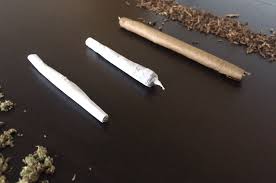 What do your joints look like? Can you twist one up? Join a Happy Travelers Tours adventure and participate in our Cannabis Camp – you’ll have your chance to compete in a Joint Rolling Competition!
What do your joints look like? Can you twist one up? Join a Happy Travelers Tours adventure and participate in our Cannabis Camp – you’ll have your chance to compete in a Joint Rolling Competition!
Cannabis Hyperemesis Syndrome - What Is It?
What is cannabis hyperemesis syndrome? Is it a cannabis bad trip? Is there such a thing as chs weed or chs marijuana?
Many people have questions about CHS cannabinoid hyperemesis syndrome, as this syndrome has been reported in the media numerous times over the past few years. This is a very rare syndrome that occurs in long-term heavy users of THC-rich cannabis. CHS was first reported in the medical literature in 2004. Symptoms include nausea, vomiting and abdominal pain. CHS is also known as cannabis vomiting syndrome.
CHS occurs episodically or cyclically, meaning that the symptoms occur, then resolve, then come back again and so on, over and over. More than 90% of cannabis users who experience these symptoms also have a compulsion to bathe in hot water during the episode, reporting that it alleviates the discomfort. This compulsion is often what helps doctors and patients figure out that CHS is what’s happening as it is often confused with other diagnoses such as stomach flu, inflammation of the gallbladder, and appendicitis (where there is no compulsion to bathe in hot water).
Many people suffering from CHS will seek help at the ER and because they are reluctant to tell the doctor about their cannabis use, they go undiagnosed. However, this is changing as cannabis becomes legal in more states. Abstinence from THC-rich cannabis resolves the condition. Some CHS sufferers are able to re-introduce THC in very low doses without a return of symptoms, but other find that they can no longer tolerate THC.
While there is no ‘chs weed’ per se, it is unknown why some cannabis users experience hyperemesis syndrome. It has been theorized that overuse of THC can make some people’s cannabinoid receptors act paradoxically (opposite) of how they are supposed to act. For example, we know that THC is quite effective for stopping nausea and vomiting because THC binds to the receptors on cells located in the part of the brain that control these symptoms. Once THC binds to the receptor, a chemical reaction takes place, telling the cells to stop sending the nausea/vomiting message. But in CHS, THC causes the opposite effect, increasing nausea and vomiting.
It’s likely that some people are predisposed to this paradoxical reaction because only a very small percentage of people who overuse THC get cannabis hyperemesis syndrome.
Medical cannabis patients usually figure out that overuse of THC-rich cannabis is not effective in treating their medical conditions, as tolerance develops if too much THC is used. Tolerance can lead to loss of therapeutic effects. Low doses used intermittently work quite well for most. Daily users of low dose THC are unlikely to develop CHS.
Including CBD, and/or the raw unheated cannabinoids (THCA and CBDA), in a cannabis treatment regimen is likely to increase the effectiveness and decrease risk of any unwanted side effects, including CHS.
Marijuana is the dried leaves, flowers, stems, and seeds from the cannabis sativa cannabis indica plant. Hashish, oils and other products are made from the concentrated resins of the cannabis flower.
Marijuana has several active substances. These include tetrahydrocannabinol (THC) and related chemicals. These bind to molecules found in the brain. That causes the drug “high” and other effects that users feel.
Your digestive tract also has a number of molecules that bind to THC and related substances. So marijuana also affects the digestive tract. For example, the drug can alter the time it takes the stomach to empty. It also affects the esophageal sphincter. That’s the tight band of muscle that opens and closes to let food from the esophagus into the stomach. Long-term use can change the way the affected molecules respond and lead to the symptoms of CHS from marijuana.
What causes cannabinoid hyperemesis syndrome (which is also known as cannabis vomiting syndrome)?
Marijuana has very complex effects on the body. Experts are still trying to learn exactly how it causes CHS syndrome in some people.
In the brain, marijuana has the opposite effect of CHS. It helps prevent nausea and vomiting. The drug is also good at stopping such symptoms in people having chemotherapy.
In the digestive tract, marijuana seems to have the opposite effect. It actually makes you more likely to have nausea and vomiting. With first use, the signals from the brain may be more important. That may lead to anti-nausea effects at first. But with repeated use of marijuana, certain receptors in the brain may stop responding to the drug in the same way. That may cause the repeated bouts of vomiting found in people with CHS.
It still isn’t clear why some heavy marijuana users get the syndrome but others do not; as we said earlier, there isn’t a chs cannabis in specific.
What are the symptoms of cannabinoid hyperemesis syndrome?
People with CHS suffer from repeated bouts of vomiting. In between these episodes are times without any symptoms. Healthcare providers usually divide these symptoms into 3 stages. They are the prodromal phase, the hyperemetic phase, and the recovery phase.
During the prodromal phase, the main symptoms are usually early morning nausea and belly (abdominal) pain. Some people also develop a fear of vomiting. Most people keep normal eating patterns during this time. Some people use more marijuana because they think it will help stop the nausea. This phase may last for months to years.
The hyperemetic phase is next. Symptoms during this time may include:
- Ongoing nausea
- Repeated episodes of vomiting
- Abdominal pain
- Decreased food intake and weight loss
- Symptoms of dehydration
During this phase, the cannabis vomiting is often intense and overwhelming. Many people take a lot of hot showers during the day. They find that doing so eases their nausea. This may be because of the affects of the hot temperature on a part of the brain called the hypothalamus, which controls both temperature regulation and vomiting. People often first seek medical care during this phase.

How is cannabinoid hyperemesis syndrome diagnosed?
Many health problems can cause repeated vomiting. To make a diagnosis, your healthcare provider will ask you about your symptoms and your past health. He or she will also do a physical exam, including an exam of your abdomen.
Your healthcare provider may also need more tests to rule out other causes of the vomiting. That’s especially the case for ones that may signal a health emergency. Based on your other symptoms, these tests might include:
- Blood tests for anemia and infection
- Tests for electrolytes
- Tests for pancreas and liver enzymes, to check these organs
- Pregnancy test
- Urine analysis, to test for infection or other urinary causes
- Drug screen, to test for drug-related causes of vomiting
- X-rays of the abdomen, to check for conditions like blockage
- Upper endoscopy, to view the stomach and esophagus for possible causes of vomiting
- Head CT scan, if a nervous system cause of vomiting seems likely
- Abdominal CT scan, to check for health problems that might need surgery
Cannabis hyperemesis syndrome was only recently discovered, so some healthcare providers may not know about it. As a result, they may fail to spot it for many years. They often confuse CHS with cyclical vomiting disorder. It’s a health problem that causes similar symptoms but doesn’t respond to the hot shower or warm bath - a gastroenterologist might make the diagnosis.
How is cannabinoid hyperemesis syndrome treated?
If you have had severe vomiting, you might need to stay in the hospital for a short time. During the hyperemesis phase, you might need these treatments:
- Fluid replacement for dehydration, given through an IV
- Medicines to help decrease vomiting
- Pain medicine
- Proton-pump inhibitors, to treat stomach inflammation
- Frequent hot showers
Symptoms often ease after a day or two unless marijuana is used before this time.
To fully recover, you need to stop using marijuana all together. Some people may get help from drug rehabilitation programs to help them quit. Cognitive behavioral therapy or family therapy can also help. If you stop using marijuana, your symptoms should not come back.
What are the complications of cannabinoid hyperemesis syndrome?
Very severe, prolonged vomiting may lead to dehydration. It may also lead to electrolyte problems in your blood. If untreated, these can cause rare complications such as:
- Brain swelling (cerebral edema)
- Muscle spasms or weakness
- Seizures
- Kidney failure
- Heart rhythm abnormalities
- Shock
Your healthcare team will quickly work to fix any dehydration or electrolyte problems. Doing so can help prevent these problems.
What can I do to prevent cannabinoid hyperemesis syndrome?
You can prevent CHS by not using marijuana in any form. You may be reluctant to believe that marijuana might be the underlying cause of your symptoms. That may be because you have used it for many years without having any problems. The syndrome may take several years to develop. The drug may help prevent nausea in new users who don’t use it often. But people with CHS need to completely quit using it. If they don’t, their symptoms will likely come back.
Quitting marijuana may lead to other health benefits, like:
- Better lung function
- Improved memory and thinking skills
- Better sleep
- Decreased risk for depression and anxiety
When should I call my healthcare provider?
Call your healthcare provider if you have had severe vomiting for a day or more. Key points about cannabinoid hyperemesis syndrome
- CHS is a condition that leads to repeated and severe bouts of vomiting. It results from long-term use of marijuana.
- Most people self-treat using hot showers to help reduce their symptoms.
- Some people with the syndrome may not be diagnosed for several years. Admitting to your healthcare provider that you use marijuana daily can significantly speed up the diagnosis and possibly avoid many invasive and expensive tests.
- You might need to stay in the hospital to treat dehydration from CHS.
- Symptoms start to go away within a day or two after stopping marijuana use. In people with CHS, symptoms almost always come back if they use the drug again.
Cannabis Hyperemesis Syndrome - What to Do Next
Read our Blog Post: My Cannabis Hyperemesis Syndrome Story by Happy Travelers Tours Founder. To learn more about cannabis, growing marijuana and safe ways to consume weed consider taking a Happy Travelers Tour!
How long does a marijuana high last?
How Long Does a Marijuana High Last is one of our most popular Blog Posts. It's packed full of useful information designed to help novices and chronics navigate the effects of cannabis by better understanding the complexity of consumption. This post talks about how long the affect of cannabis lasts. Read: How Long Does Cannabis Stay in your System to learn about cannabis and drug tests.
| How long does a marijuana high last depends on several factors, including - consumption type - strain and potency - other factors |
- How long does a weed high last? - How long does being high last - How to stop being high |
· Consumption · Strain and Potency · Tolerance · Weed Measurements · THC and CBD |
| Some answers to cannabis consumption questions |
- How to get stoned - Can you get high from eating weed |
· Smoke · Vape · Dab · Edible · Beverage |
| Strains and Potency as well as THC to CBD ratios all determine the quality & duration of a cannabis high |
- Strains and Potency | · Sativa · Indica · Ruderalis · Hybrids |
| How does tolerance to cannabis affect a marijuana high? |
- Tolerance | - Newbie - Experienced - Chronic |
If there’s one question that everyone seems to wonder about — but no one knows the answer to — it’s, “How long does weed high last?” If you’re new to the world of marijuana, don’t feel bad asking this question. Even many long-time cannaseurs have a hard time giving a conclusive answer.
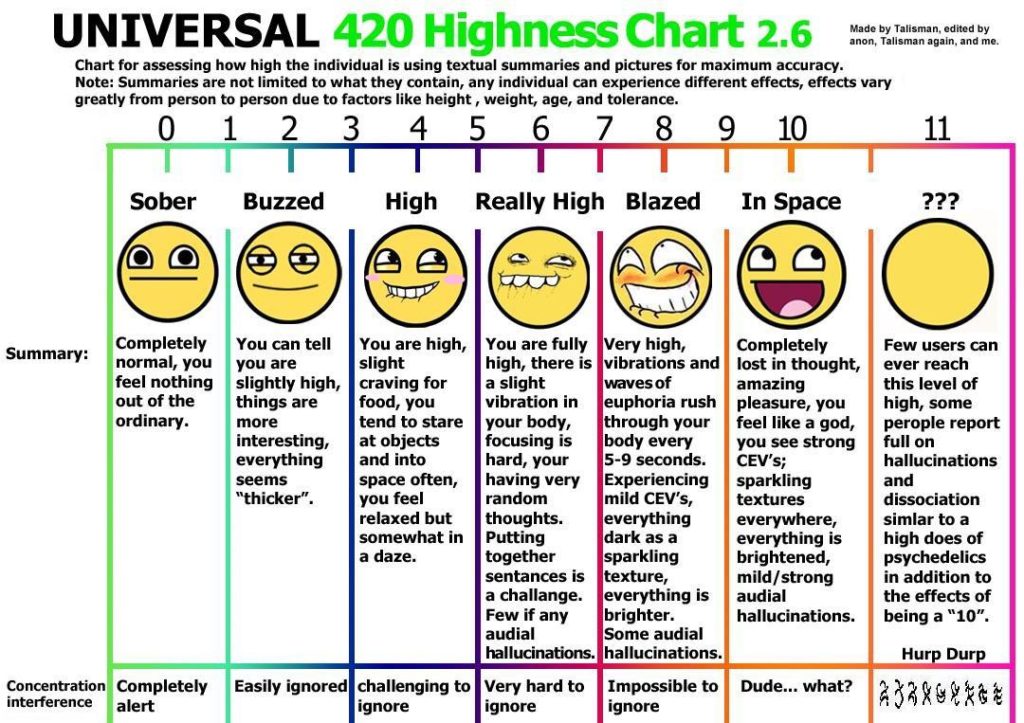
But not us! We know what you want to hear. So in this article, the cannabis experts at Happy Travelers Tours give you the definitive answer to the question how long does weed high last.
How Long Does Being Stoned Last?
The best way to answer that question is by saying, “It depends…” We know that’s not very definitive, but let us finish. Before you get angry and storm off, the duration of your weed high really does depend on the way you consume your THC.
What that means is that you can tailor your experience by choosing from among the many different methods of getting THC into our body. Once you decide that, we can give you a much more definitive answer to your question.

Focus On The Effects, Not The Duration
Most marijuana highs will peak after 30 minutes (on average) and then start to trail off. You’ll still feel the effects for another hour or two, but they’ll gradually get less and less intense.
And what’s more, they all pretty much last the same amount of time (give or take an hour or two).
So rather than worrying overly much about how long a weed high lasts, focus instead on the effects you experience. Ask yourself:
- Was the high too harsh?
- Was it too weak?
- Did the weed high make you sad?
- Did it make you paranoid?
- How did you feel coming out of it?
- Were the munchies really intense?
If you can find a strain or potency that gives you all the good without the bad, that’s worth its weight in gold. A totally pleasurable experience that only lasts for two hours is much better than an unpleasant experience that lasts for six.
Focus on the effects, not the duration, and you’ll be a Happy Traveler just like us. Here’s how the durations break down based on method of consumption.
Smoking
Smoking is one of the most common ways to get your ganja on. The tools used for smoking are literally legion and include:
- Joints (straight or cross)
- Blunts
- Thai sticks
- Vape pens
- Vaporizers
- Bongs
- Dab rigs
Basically, any time you inhale the smoke or vapor from a marijuana product, you’re smoking.
How long does a smoking weed high last? 1-3 hours
Edibles
There are so many ways to make your marijuana into edibles that you’re really only limited by your creativity. Our favorite edibles include:
- Honey
- Gummies
- Candy
- Butter
- Milk
- Tea
- Pills
Yes, that’s right. Milk, tea, and pills are included on this list. Basically, anything that you put in your mouth and swallow can be considered an edible.
How long does an edibles weed high last? 4-6 hours
Some stoners have even reported tripping for as long as 12 hours off a high-quality edible, but those claims are largely apocryphal.
Topical Application
Topical application (on your skin) is becoming a very popular method of consumption among those looking for medical benefits from their cannabis. There are even multiple means of applying topical marijuana to your skin. They include:
- Patches
- Creams
- Oils
The key thing to remember about topical applications is that they won’t cause a weed high. This is because your skin absorbs the cannabinoids very slowly.
So by the time the THC reaches your bloodstream after traveling through the layers of your skin, its potency has been reduced significantly (enough not to cause any psychedelic effects).
How long does a topical application weed high last? It doesn’t.
Sublingual Administration
Sublingual is the scientific word for “putting something under your tongue and letting it dissolve.” After a few minutes, that substance — in this case, some type of cannabis product — is absorbed into your bloodstream through the arteries in your jaw, where it travels directly to your brain.
Sublingual consumption of marijuana is one of the easiest, fastest, and most discreet methods available today. Products for sublingual consumption include:
- Dissolvable strips
- Tinctures
- Oils
- Isolates
- Distillates
How long does a sublingual administration weed high last? 2-4 hours
Cannabis and Sex (Wink, Wink, Nudge, Nudge)
Yes, we’re talking about sex here). Bet you didn’t know there was a cannabis product made especially with that in mind. It’s called cannabis lube, and it’s designed with her in mind (meaning guys don’t use it).
Cannabis lube doesn’t get you high, but it does get things working and relaxed down there (if you catch our drift). That makes for better, more enjoyable intimacy on both sides of the equation.
And, of course, consuming cannabis to get ‘in the mood’ is another way which cannabis can affect sex – given the nature of a cannabis high, it’s quite possible you’ll find smoking weed while having sex makes for an amazing experience.
How long does a special situation weed high last? Technically, you won’t get high at all, but you might feel euphoric in other ways.
Now that you get a general sense of how long a weed high lasts based on the method of consumption you choose, let’s examine some other factors that affect duration.
Other Factors That Affect How Long A Weed High Lasts
1) Quality
Quality plays an important role in determining how long a weed high lasts. High-quality, organic marijuana that’s rich in cannabinoids, terpenes, and trichomes will provide a much more satisfying high than the low-quality mids or regs you might be used to.
It’s worth the extra money for the chance to stretch your weed high out just a little bit longer.
2) Strain
The strain you choose can also have an impact on how long your weed high lasts. Stronger strains can make it seem like your high lasts longer because the effects are so much more dramatic.
But before you rush out to buy the strongest weed strain money can buy, keep in mind that with extreme highs come extreme lows and side effects.
Because strong weed strains are bred for high THC and low CBD, there are fewer cannabinoids to counteract the negative effects of THC (e.g., paranoia, anxiety, etc.).
3) THC Content
THC content plays a large role in the quality of experience you can expect from your marijuana product. Breeders are growing whole bud that contains 25-percent THC.
THC extracts are even pushing the coveted triple-digit THC percentage (that’s 100-percent, boys and girls).
With these big-number products, weed highs may seem longer because the “distance” you have to travel from peak high to normal is so much greater.
4) Experience
Your experience dating Mary Jane also plays a big part in how long a weed high lasts. Think of this as your tolerance to the cannabinoids that marijuana has to offer.
As with any drug, your body will eventually get used to processing the THC in your joint, so you’ll need more just to feel the same effects.
That can have a dramatic impact on the duration of your high. If you’re a brand-new cannaseur, you’ll likely trip balls for quite some time after just one or two tokes.
But if you’re a seasoned canna-warrior, you may only feel high for 10 minutes on the strongest weed strain available. That’s the benefit and the curse of experience with the wacky weed.
5) Amount Consumed
The amount of pot you consume has a direct effect on how long a weed high lasts.
Think about it: if you take two drags on a blunt over the course of five minutes, your weed high isn’t going to last anywhere near as long as if you take 20 drags on several blunts over the course of 45 minutes.
Even smoking two blunts (or joints or whatever) in 20 minutes is going to bring on a high that lasts longer than those initial two tokes in five minutes.
6) Your Metabolism
The speed with which your body processes food, drink, medications, and other “foreign” substances (your metabolism) also affects how long a weed high lasts.
If you have a fast metabolism, your body processes outside materials very quickly. That means the THC will spend a shorter time in your brain and blood (which results in a short high).
If you have a slow metabolism, your body processes outside materials slowly. That means the THC will spend longer in your brain and blood (which results in a long high).
7) Environment
No, we’re not talking about global warming here — it’s not that type of environment. The environment in this case refers to whether or not your surroundings are relaxing and familiar or tense and strange.
If you’re at home in your favorite chair with a classic stoner movie on the tube or playing a fun weed game, your high is going to last quite a long time.
But if you’re hunkered down behind a dumpster in some strange alley on the opposite side of town, your nerves are going to decrease the weed high substantially. For the best experience, find a relaxing environment where you can chill for a while without worrying about what's going on around you.
Terpenes
Let's talk for a quick minute about Terpenes and Trichomes and why they're an important indicator of when a cannabis plant is ready to be harvested. First, let's check out the chart of common terpenes found in pot and what they're affects are.
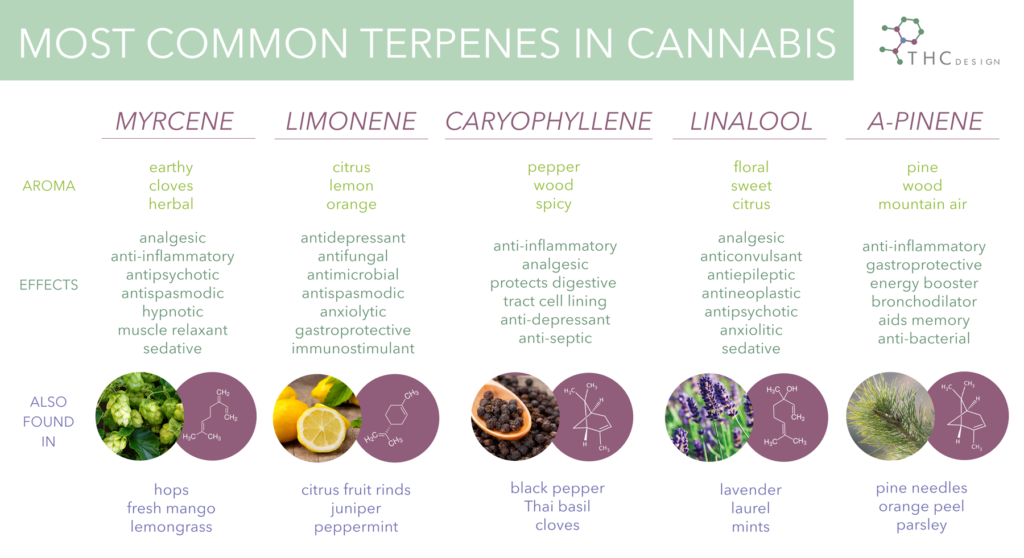
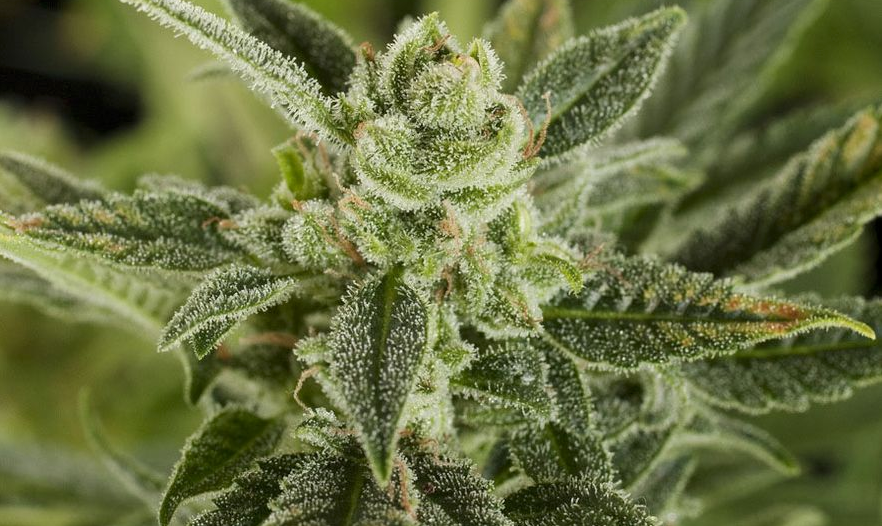
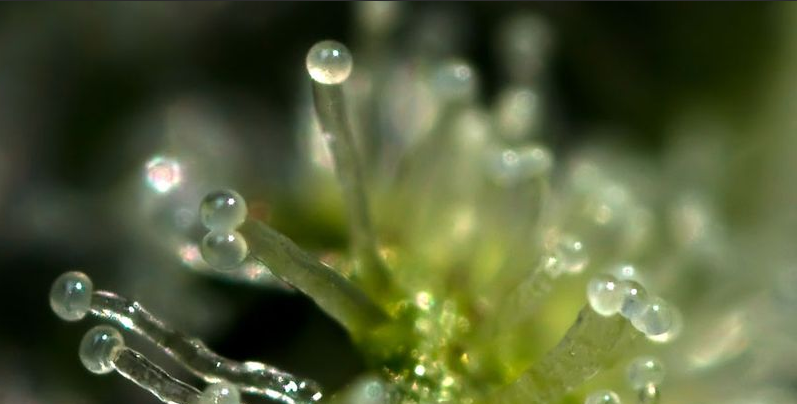
For more information, Book a Happy Travelers Tour and get up close with cannabis plants, Master Growers and Retailers!
Have you heard of Cannabis Ruderalis?
You may already know the differences between indica and sativa varieties of cannabis, but have you heard of cannabis ruderalis? According to Jorge Cervantes, grow guru and author of The Cannabis Encyclopedia, “Botanists disagree as to whether c. ruderalis qualifies as a separate species or subspecies.” We do know that hybrids which cross ruderalis with either sativa or indica strains create plants which “auto flower” based on time rather than on changes in lighting.
The
effects of cannabis ruderalis alone are minimized by its naturally low
concentrations of THC. However, the stability and short lifecycle make
ruderalis versatile and attractive to breeders who want to take advantage of
its autoflowering trait. Ruderalis genes offer the ability for breeders to
create an autoflowering hybrid with the advanced potency and flavor profile
from its genetic partner.
Different Subspecies of Cannabis
A great many of new cannabis consumers don't
know that the cannabis plant comes in 3 subspecies: Cannabis indica, Cannabis
sativa and Cannabis ruderalis. They differ in characteristics such as
morphology, flowering time, geographical origin and so on.
Because this article will be about the best
ruderalis sativa strains, we’ve determined it would be wise to introduce the
reader to the basics of these cannabis varieties!
Cannabis
Indica
Typically, cannabis Indica plants are short, bushy plants with
wide leaves. Indica plants typically grow faster and have a higher yield than
the sativa variety. Medicine produced from cannabis Indica plants have higher
CBD and lower THC counts.
The major qualities of Indica
medicinal strains include:
- increased mental
relaxation - muscle relaxation
- decreases nausea
- decreases acute pain
- increases appetite
- increases dopamine (a
neurotransmitter that helps control the brain’s reward and
pleasure centers) - for night time use
Cannabis Sativa
Cannabis
Sativa plants are opposite of the Indica strains and grow tall and thin with
narrow leaves. Sativa plants are also generally a lighter shade of green then
their counterpart, the Indica strain. Sativa strains take longer to grow,
mature, and require more light. Medicine produced from cannabis Sativa plants
have lower CBD and higher THC counts.
The
major qualities of Sativa medicinal strains include:
- anti-anxiety
- anti-depressant
- treats chronic pain
- increases focus and
creativity - increases serotonin (a
neurotransmitter involved in the regulation of learning, mood, sleep, anxiety
and appetite) - for day time use
Cannabis Ruderalis
The ruderalis originates
from central Russia. It is incredibly short, growing to a height of only
50-100cm and it has fewer leaves and branches compared to the other species. It
produces a very low amount of THC, which makes it unsuitable for recreational
use. However, it has a fair amount of CBD and can be used for medicinal
properties, although it is not as popular as other variants.
The main
reason Cannabis ruderalis is used at all is due to its autoflowering properties.
This means that these plants switch from the vegetative phase to the flowering
phase automatically with age, while most strains are photoperiod-dependent.
Growers make use of this trait to shorten flowering times in other strains
while at the same time making them shorter and more robust, which is perfectly
suited for indoor growing.
Today, these varieties are crossbred to
produce some amazing, award-winning strains, such as:
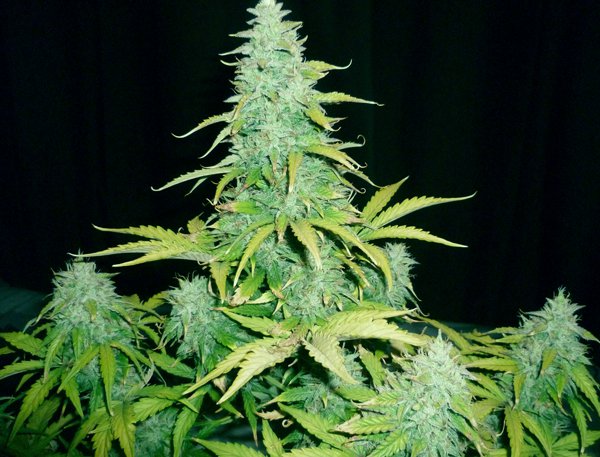
Amnesia Haze Automatic
Amnesia Haze is a
classic sativa strain bred in the Netherlands in the 90's. Known for its highly
energetic and uplifting high and a wonderful spicy, citrus aroma, it is a
respected sativa and a crowd favorite. The only downside to it, as with most
Sativas, is its very long flowering time, taking up to 12 weeks to harvest.
This problem is solved by crossing the Amnesia Haze with a ruderalis, creating
the Amnesia Haze Automatic.
The Amnesia Haze Automatic is a
sativa-dominant hybrid strain, keeping all the best qualities of the Amnesia
Haze while cutting down on flowering time. Indoors, it will take this strain
around 80 days from seed to bud, while the regular Amnesia Haze requires that amount
of time just for the flowering phase. This shows the benefits of the ruderalis
genes. Considering it is an autoflowering strain, she will grow very large
(approx. 80-150cm), clearly indicating the sativa heritage with thin leaves and
long buds. The yield is generous with an average of 50g per indoor plant up to
150g of long, foxtail-like buds in ideal conditions.
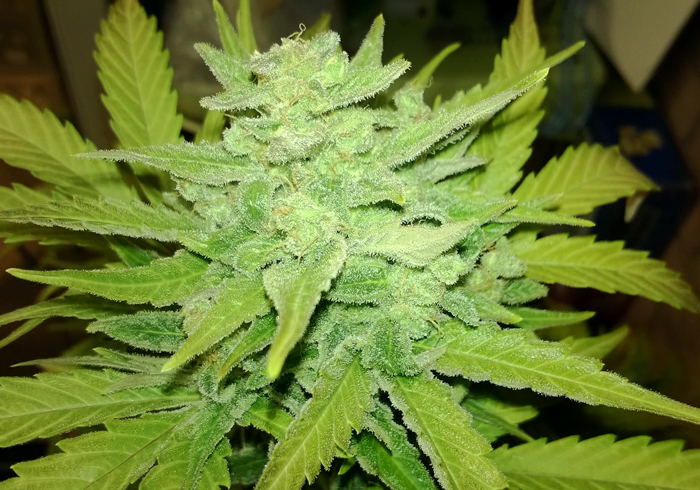
Royal Dwarf
Another sativa-dominant
hybrid, Royal Dwarf is a cross between the original Skunk and a
ruderalis variety. It is a very compact strain with tight buds, almost
bonsai-like in appearance. This makes her perfectly suited for indoor or micro
growing. The average height is really low, around 40-60cm, but the yield is
great for a strain of that size with a 60g average per plant. The Royal Dwarf
is a really fast strain due to its excellent ruderalis genetics with a harvest
time of 8-9 weeks.
The high is physical and deeply relaxing, with
a mildly uplifting effect, which is typical to the Skunk heritage. A heavy
skunky aroma with a hint of Diesel best describes this strain's flavor.
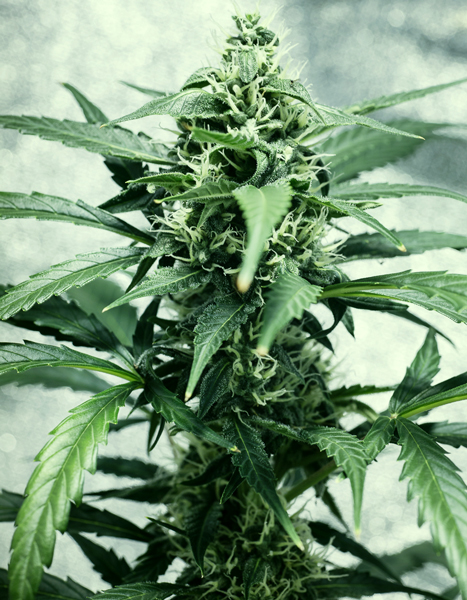
Royal Haze Automatic
(insert image here)
The last one in our list
of excellent autoflowering sativa-dominant hybrids is the Royal Haze
Automatic. It was created by crossing Amnesia Haze and Skunk and then breeding
that cross with a ruderalis of great quality. Haze strains are in great demand
due to their astounding sativa properties and the Royal Haze Automatic trumps
even that with its really short harvest time of 10-12 weeks. The height of the
plant peaks around 60-100cm, which is unheard of for a Haze and we can thank
the ruderalis genetics for that. Royal Haze Automatic has an amazing yield too,
with an average of 80g per plant.
As far as high and flavor goes, it has all the
qualities you would expect from a Haze. A buzzing, energetic high that will
leave you focused and in a good mood throughout the day combined with a
great-tasting, spicy citrus flavor.
We hope that this article will help you in
choosing a cannabis strain best suited for your needs and that you will learn a
lot about the different subspecies of cannabis through this process.
To see cannabis plants up close and talk with a Master Grower about the subspecies they’re producing just sign up for a Happy Travelers Wine and Weed Tour!
- Check out these blogs posts!
4/20 National Cannabis Day: The History, Celebrations and Things to Do
Woe is on us as there is no 4/20 National Cannabis Day in 2020! At least, there's no public gatherings and giant group smoke-outs! Next, we're celebrating 4/20 National Cannabis Day is Style!
We've all seen a 420 meme which shows someone really stoned and the phrase "It's 420" or some thing like that. But, what is the history behind the number? National Cannabis Day, also known as International Weed Day is celebrated on April 20th . Why? Popular culture says it is all because of the actions of a group of teenagers back in the 1970’s. Since then the number 420 has become the code or slang for “time to get stoned”.
The History of 4/20:
 There are many reasons why Northern California holds a special place in cannabis history and from San Francisco to the little town of Weed California, thousands of people will be celebrating the “National Cannabis Day” on April 20.
There are many reasons why Northern California holds a special place in cannabis history and from San Francisco to the little town of Weed California, thousands of people will be celebrating the “National Cannabis Day” on April 20.
Why 4/20? There are many stories ranging from Police Codes to mythic moments in rock and roll, the most credible story behind 420’s enduring status among stoners dates back to 1971. A group of students called “the Waldos” hatched a plan to meet at 4:20 p.m. by the statue of Louis Pasteur on the campus of San Rafael High. They met up, got high and went searching for a secret patch of cannabis near Point Reyes.
From Wikipedia.com In 1971, five high school students – Steve Capper, Dave Reddix, Jeffrey Noel, Larry Schwartz, and Mark Gravich – in San Rafael, California calling themselves the Waldos because "their chosen hang-out spot was a wall outside the school" used the term in connection with a 1971 plan to search for an abandoned cannabis crop that they had learned about, based on a treasure map made by the grower. The Waldos designated the Louis Pasteur statue on the grounds of San Rafael High School as their meeting place, and 4:20 p.m. as their meeting time. The Waldos referred to this plan with the phrase "4:20 Louis". After several failed attempts to find the crop, the group eventually shortened their phrase to simply "4:20", which ultimately evolved into a code-word that the teens used to mean consuming cannabis.
Mike Edison says that Steven Hager of High Times was responsible for taking the story about the Waldos to "mind-boggling, cult-like extremes" and "suppressing" all other stories about the origin of the term. Hager wrote "Stoner Smart or Stoner Stupid?" in which he attributed the early spread of the phrase to Grateful Dead followers – after Reddix became a roadie for the Dead's bassist, Phil Lesh – and called for 4:20 p.m. to be the socially accepted hour of the day to consume cannabis.
April 20 has become an international counterculture holiday, where people gather to celebrate and consume cannabis. Many such events have a political nature to them, advocating the liberalization / legalization of cannabis.
Vivian McPeak, a founder of Seattle's Hempfest states that 4/20 is "half celebration and half call to action". Paul Birch calls it a global movement and suggests that one can't stop events like these. On that day many marijuana users protest in civil disobedience by gathering in public to light up at 4:20 pm.
As marijuana continues to be decriminalized and legalized around the world, Steve DeAngelo, cannabis activist and founder of California's Harborside Health Center, notes that "even if our activist work were complete, 420 morphs from a statement of conscience to a celebration of acceptance, a celebration of victory, a celebration of our amazing connection with this plant" and that he thinks that "it will always be worthy of celebration".
Let’s talk a little about some of the legendary 420 events which are typically celebrated in NorCal, as well as some great places to chill on April 20th.
This list is subject to change over the next few months and we will post updated versions as new information becomes available.
North American observances have been held at many locations, including:
- "Hippie Hill" in San Francisco's Golden Gate Park near the Haight-Ashbury district

- The University of Colorado's Boulder campus
- Ottawa, Ontario, at Parliament Hill and Major's Hill Park
- Montreal, Quebec, at Mount Royal monument
- Edmonton, Alberta, at the Alberta Legislature Building
- Vancouver, British Columbia, at the Vancouver Art Gallery,
- Washington Square Park in Manhattan, the largest and most notable of a number of gatherings and demonstrations on April 20 in New York City.
- Mile High 420 Festival in Denver's Civic Center Park
- The National Cannabis Festival in Washington D.C. has been running since 2016 and includes live music, educational sessions, and history, and local vendors.
- The University of California, Santa Cruz, where the growing size of the unofficial event there caused the Vice Chancellor of Student Affairs to send an e-mail to parents in 2009 stating: "The growth in scale of this activity has become a concern for both the university and surrounding community."
 Here are eight Sonoma County places where you can “get high” while you get high – that is, each location offers a fantastic view and quiet places to enjoy a smoke, toke or dab.
Here are eight Sonoma County places where you can “get high” while you get high – that is, each location offers a fantastic view and quiet places to enjoy a smoke, toke or dab.
- Bullfrog Pond, Armstrong Woods: The quiet woods, lovely pond, trails and views make it a great place to relax and enjoy whatever type of natural medicine you prefer. There’s also a campground here. It’s accessible for those with limited mobility.
- Kortum Trail, Jenner: The Kortum Trail is a beautiful easy walk/hike that runs along the coastline south of Jenner. Park at Shell Beach and pick a direction, north or south to enjoy your walk. Go north to Goat Rock and you’ll pass a large set of stones popular with climbers. Note, at this point the trail becomes quite steep. Heading south from the Shell Beach parking lot, you can walk down and enjoy the beach as well. Either direction you chose, afterwards find your way to Bodega Bay, Jenner or Guerneville for some food and refreshments!
- Bodega Head, Bodega Bay: Drive north of Bodega Bay in order to drive West, around Bodega Bay out to Bodega Head (just follow the signs), The Grey Whales migrate north from March until June. The Head offers spectacular views and if it’s too windy, you can still enjoy them from your vehicle. It’s a fantastic place to watch the sunset.
- Robert Ferguson Observatory, Kenwood: If you prefer to stay inland, take the beautiful drive up to Sugarloaf State Park to the Robert Ferguson Observatory. This is an incredible place to check out eclipses and comets, but it’s an interesting place to visit any time of day. Those who enjoy walking and hiking should take the Planetwalk, a scaled down representation of the planets designed to fit within the confines of the park. There are two options: a 2-mile loop with 250ft elevation gain or the full 6.3 miles with 1100ft in elevation. Those who prefer neither can just chill on the observatory deck after checking out the telescopes, photos and retail center inside during open hours.
- The Villa Restaurant, Santa Rosa: If outdoor activities aren’t for you, The Villa in Santa Rosa is one of the few restaurants that offers a decent view. It’s a totally old school local restaurant that serves early bird dinner from 4pm-6pm and happy hour drink and food specials in the bar from 3pm-7:30pm. The Happy Hour menu is loaded with stoner faves.
- Paradise Ridge Winery, Santa Rosa: This winery offers amazing views of the Russian River Valley and a gorgeous property adorned with sculpture and art. Head into the tasting room for tasting if you enjoy wine, or simply enjoy the deck and grounds for a while. Note: the winery was burned to the ground during the October 2017 firestorm. Check their website to see what the status is on their re-building effort.
- Sea Ranch Chapel, Gualala: Fancy a drive up the coast? Head north to Gualala and visit the Sea Ranch Chapel. It’s open 365 days a year to the public between sunrise and sunset. The grounds are lovingly landscaped with benches and nooks in which to quietly contemplate nature. The tiny chapel is a beautiful artwork to behold with handcrafted details like carved redwood benches and magnificent stained glass windows.
- Francis Ford Coppola Winery, Geyserville: The Francis Ford Coppola Winery is a definite crowd pleaser and a must for mixed groups. Wine lovers can wine taste, movie buffs can drool over the memorabilia from films such as Apocalypse Now, Dracula and The Godfather, active types can play free bocce in the garden while sun worshippers can lounge by the pool. Have lunch at the restaurant, inside or out on the deck to enjoy the view or for lighter fare, take advantage of the Pool Café and nosh poolside. Tasting rooms are open 11am-6pm daily; Rustic restaurant is open from 11am-9pm daily
Come join Happy Travelers Tours on Saturday April 20, 2019 as we celebrate both National Cannabis Day and the Opening Day of the 2019 Cannabis Tour season!
- We have Special Events and Activities planned for 4/20 so book your Wine-and-Weed Tour today!
As seen in Ganjaprenuer!
 As seen on Ganaprenuer.com has a lovely ring to it, eh?
As seen on Ganaprenuer.com has a lovely ring to it, eh?
We are so proud to have been interviewed by the industries leading daily, Ganjaprenuer.com. This interview was conducted over a series of conversations between our Founder, Van Solkov, and Graham Abbott of Ganjaprenuer and it was originally published on October 22, 2018.
Please take a few minutes to read this insightful interview about Sharing Cannabis Culture with Tourists: https://www.ganjapreneur.com/van-solkov-sharing-cannabis-culture-with-tourists/
And, if you're interested in reading other cool press coverage, check out our article in Forbes!
Weed Measurements, Weights and Amounts
Weed Measurements, Weights and Amounts can be confusing
Weed Measurements, Weights and Amounts. The old slogan “You’ve come a long way, baby” could easily be applied to cannabis and the consumption of weed since it was criminalized in the 1930’s. So many new methods for growing, cultivating and manufacturing have been introduced that at times it can be overwhelming. However, one thing which has not changed much over the years is the very confusing way marijuana is weighed, measured and sold.
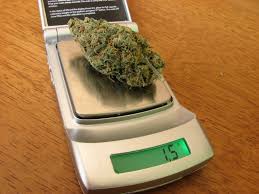 Weed Amounts. Marijuana Measurements. As you read through this blog post you’ll see a mix of pot jargon and slang as well as a crossing over from metric weights (grams) to U.S. Customary Units (ounces and pounds) which can all be confusing. Don’t worry though! We’ve created a "weed amount chart" of some weed measurements, weed weights and weed amounts for your reference; just scroll down this post to find it!
Weed Amounts. Marijuana Measurements. As you read through this blog post you’ll see a mix of pot jargon and slang as well as a crossing over from metric weights (grams) to U.S. Customary Units (ounces and pounds) which can all be confusing. Don’t worry though! We’ve created a "weed amount chart" of some weed measurements, weed weights and weed amounts for your reference; just scroll down this post to find it!
The marijuana measurement system is a confusing mix of Standard International Units and US Customary units. But when you boil it all down, the main cannabis conversion you need to remember is:
- 1 ounce of weed = 28 grams
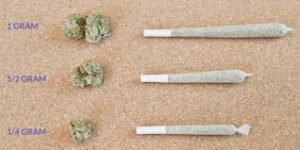 From there, it’s pretty easy to decipher the weed jargon to calculate that “a half” equals 14 grams, “a quarter” equals 7 grams, an eighth equals 3.5 gram, and “a dub” will typically equal one full gram of marijuana. (see chart below for some examples)
From there, it’s pretty easy to decipher the weed jargon to calculate that “a half” equals 14 grams, “a quarter” equals 7 grams, an eighth equals 3.5 gram, and “a dub” will typically equal one full gram of marijuana. (see chart below for some examples)
The whole point of understanding the math is so you can be an informed consumer and once you know how to do the weed measurements and costs math, you can determine if making your own marijuana concentrates, oils, edibles, and tinctures will help you save on cannabis costs based upon the price of weed in your area. Making your own concentrates is a topic for another post.
How to measure the amount of THC or CBD
The other piece of the weed measurements and amounts puzzle is how to measure the amount of THC or CBD there is in any given strain. There is a plethora of different chemicals that make up the cannabis plant, but THC (tetrahydrocannabinol) is the main psychoactive ingredient that gives users the euphoric and relaxed feeling that is commonly associated with cannabis.
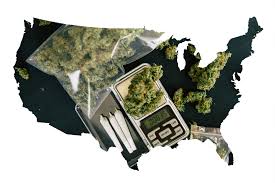 Average THC content in California varies between 15% and 30%, with more potent strains being created every year. The measurement of THC content in any given cannabis plant is taken as a percentage of that compound which makes up the plant’s flower compared to the other lesser-known compounds and plant matter in the flower, also known as a “bud”.
Average THC content in California varies between 15% and 30%, with more potent strains being created every year. The measurement of THC content in any given cannabis plant is taken as a percentage of that compound which makes up the plant’s flower compared to the other lesser-known compounds and plant matter in the flower, also known as a “bud”.
When it comes to concentrated forms of cannabis like wax, shatter, hash and edibles, the weed measurements switch from a percentage to milligrams. A gram of concentrate such as shatter may be 80% THC, but it is labeled as 80mg of THC per dose. Similarly, edibles are given a THC in milligrams dose, with the average dose for edibles begin 10mg.
Consume Safely - Get Educated!
Happy Travelers Tours specializes in educating consumers on the convergence of Wine and Weed. Our Tours focus on learning about the commonalities and similarities between vineyards and cannabis, their tastes and flavors and their historical connection to the land. If you are 21 years old or older then, please join a Happy Travelers Tours Adventure Today!
If you want to learn more about different ways to consume cannabis, check out our “What is Dabbing” blog post, our “Beginner’s Guide to CBD Oils and Tinctures” or our "Ways to Smoke Cannabis" post!
The Happy Travelers Tours weed measurement and prices chart is below:
| CATEGORY | UNIT of MEASUREMENT | DEFINITION/SLANG - USAGE | HOW MUCH DOES CANNABIS COST Note: All Prices Are Based on Northern California Dispensary/Retailers |
|---|---|---|---|
| 1/2 OZ | 1/2 ounce of marijuana | A bag of weed, a half - The term lid is not commonly used to describe a precise amount of weed, so don't use this term for business | 1/2 OZ @ $150+ |
| 1/2 oz of weed cost | Cost will vary depending on strain, your retailer and what tax rate you pay | ||
| 1/4 OZ | 1/4 of weed | A quarter, a quad - Hey! Do you have a quad I can get? | 1/4 OZ @ $60 - $120 |
| 1/4 ounce of weed | |||
| 1 4 of weed in grams | 7 Grams | ||
| 1 4 ounce of weed in grams | |||
| 1/4 of weed price | Pricing is volitile and based on factors like quality and growing methodology: indoor, outdoor canopy and outdoor sun | ||
| 1/4 oz weed price | |||
| 1/4 Ounce | 4th of weed | A quarter, or a quad, is 1/4th of an ounce and weighs in at 7 grams. Buying by the quarter is also very common as it allows heavier smokers to really get acquainted with a strain – an eighth can go quick! Minor price breaks can be seen at a quarter (depending on the specific dispensary or caregiver) but don't expect them. | |
| 1/4 LB | 1/4 pound of weed | A QP, a quarter - We're gonna score a QP! In theory, as you move up in quantity, the cost per ounce reduces, which is why some chronic tokers buy in bulk! | 1/4 LB: Not Available at Retailers |
| 1/4 weed | |||
| 1/4 weed cost | |||
| 1/4 weed price | |||
| 1/8 OZ | 1/8 of shake | An Eighth - "Shake" is the leafy remains of the trimming process; it can be used to make BHO/CO2 concentrates. | 1/8 OZ @ $30 - $50 |
| 1/8 of weed | |||
| 1/8 weed cost | The cost of an eight is, typically, more per gram than larger quantities. | ||
| 1/8 of weed cost | |||
| 1/8 weed bag | |||
| 1/8 of weed in grams | 3.5 Grams- A single gram is the smallest amount available for purchase | ||
| 1/8 of weed price | Pricing on eighths will in many cases be more expensive on a per gram basis than purhasing larger quantities. | ||
| 1/8 ounce weed price | |||
| 1/8 oz of weed price | |||
| 1/8 of weed price california | |||
| 1/8 ounce of weed picture | An Eighth - I'm broke, do ya got an eighth for me? | ||
| 1/8 ounce weed | |||
| 1/8th of weed | |||
| 1 GRAM | 1 bud of weed | A single flower | 1 GRAM @$5 - $8 |
| 1 gram of marijuana | The smallest amount of marijuana generally available for purchase in the world of weed | ||
| 1 gram of pot | |||
| 1 gram of weed | |||
| 1 gram of weed cost | The most expensive way to purchase cannabis is on a per gram basis. | ||
| 1 gram of weed price | |||
| 1 gram of weed on a scale | |||
| 1 gram of weed picture | |||
| 1 gram of weed size | The size of a single gram of pot will vary depending on: is it ground? Is it a whole bud? Is it pieces of bud? | ||
| 1 gram weed bags | |||
| 2 GRAMS | 2.5 grams of weed | A dub or a 20 sack | 2 GRAMS @$10 - $20 |
| 20 bag of weed | |||
| 20 dollars worth of weed is called | |||
| 20 bag of weed weight | About a gram | ||
| 20 dollar bag of weed | |||
| 20 of weed is how many grams | |||
| 20 sack of weed | |||
| 20 sack of weed weight | |||
| 20 dollars worth of weed in grams | |||
| 20 GRAMS | 20 grams of weed | About 3/4 of an ounce. .71% of an ounce to be precise | 20 GRAMS @$150+ |
| 20 grams of weed equals how many ounces | |||
| 20 grams of weed in florida | |||
| 20 grams of weed worth | More or less $250 | ||
| 2 grams of marijuana | A $40 bag | ||
| 2 grams of weed | |||
| 2 grams of weed worth | |||
| 2 grams of weed cost | |||
| 2 grams of weed on a scale | |||
| 2 grams of weed size | |||
| 3 Zips | 3 zips of weed | 1 Zip = 28g/1oz, so "3 zips of weed" is equal to 3 ounces | |
| 3.5 Grams | 3.5 grams to ounces | For an approximate result, divide the mass value by 28.35, so, 3.5 grams is = to 0.123459 ounces. Generally, the smallest amount you can buy loose, a gram will cost anywhere from $8 to $20, so, 3.5 grams will cost between $28 and $70. 3.5 grams of weed is called an "eighth". | 3.5 GRAMS @$35 - $50 |
| 3.5 grams of weed cost | |||
| 3.5 grams of weed price | |||
| 3.5 grams of weed is called | |||
| 3.5 weed cost | |||
| 3.5 loud weed | "Loud Weed" relates to the aroma of the bud when you open the bag or jar. When you get top-shelf you better expect a smell that is going fill the room. It will always depend on the strain but you’re probably going to encounter a very skunky very dense smell with this caliber of kush, with fruity, sweet, or vanilla notes introduced to the mix depending in the strain. Typically, this quality of weed will cost more than a less potent bud. | ||
| 3.5 of loud weed | |||
| 3.5 weed looks like | |||
| 3.5 ounces grams | |||
| 30 Dollars | 30 dollars worth of weed in grams | 30 dollars worth of weed is just about an eighth depending on the quality of the pot and the city or region you're in. | |
| 30 bag of weed weight | |||
| 30 dollars worth of weed | |||
| 30 Grams | 30 grams of weed | 30 Grams of weed is just over one ounce; often referred to as a 'fat bag' because it weighs more than 1 ounce | |
| 4 Ounces | 4 zips of weed | Four ounces of cannabis | |
| Four Way | 4 way weed | Four Way is a sticky genetic foursome of landrace genetics and Skunk #1. Created through the union of three Middle Eastern landrace strains (Afghani, Indian and Pakistani) plus the addition of the classic Skunk #1, you best believe Four Way produces an odor that could tip an elephant, much less fill the room it’s being consumed in. | |
| 40 Grams | 40 grams of weed cost | About and ounce and a quarter. | |
| 5 Sack | 5 sack of weed | Also known as a 'nickle sack', this refers to $5 worth of pot, which will vary in quantity depending on quality. Not an efficient way to purchase weed. | |
| 5 Leaf | 5 leaf marijuana plant | 3 leaf marijuana plant strain is ruderalis, 5 lead marijuana plant strain is indica and a 7 leaf marijuana plant strain is sativa | |
| 5 leaf weed plant | |||
| 5 Stages | 5 stages of germination of seeds | Imbiition, Growth, Root Growth, Shoot Growth, Leaves (which being photmorphogenesis | |
| 5 Week | 5 week weed plant | The typical weekly growth schedule is something like this: Weeks 1 and 2: Vegetation Stage followed by a new set of "weeks" 1 - X of the Flowering Stage. | |
| 50 grams | 50 of weed in grams | 50 dollars worth of weed in grams might be as much as an eighth depending on where you live | 50 GRAMS: Not Available at Retailers |
| 50 miligrams | 50 mg edible | ||
| 500 miligrams | 500 mg edible experience | ||
| 502 Law in WA | 502 cannabis | I- 502 was an initiative to the Washington State Legislature in 2012 that proposed the legalization of recreational marijuana use and sale to the general public | |
| 60 Grams | 60 grams of cannabis oil | The average person will take about 90 days to consume 60 grams for cannabis oil | |
| 7 grams | 7 of weed | 7 grams of cannabis weed . A quarter, or a quad, is 1/4th of an ounce and weighs in at 7 grams. | |
| 710/OIL | 710 friendly | Just like 420, 710 is a stoner term used to celebrate dabs and cannabis concentrates on the 10th of July. The number 710 spells oil when placed backward; a word used to describe potent concentrations of marijuana like hash oil, honey oil, wax and shatter | |
| 710 weed | |||
| 710 dab | |||
| 710 club | |||
| 710 slang | |||
| 710 marijuana | |||
| 710 concentrate vaporizer | |||
| 710 cannabis | |||
| 8 Grams | 8th of weed in grams | An eighth of weed in grams is 3.5 grams; an eight of "loud weed" means 3.5 grams of a super stinky strain of cannabis | 8 GRAMS @$60 - $100 |
| 8 ball weed | |||
| 8th of loud | |||
| 8th of weed in a bag | |||
| 8th of marijuana | |||
| 8 Grams UK | 8 ball weed price uk | In the UK an 8th can cost £25-35 depending who you know | |
| 0.8 | 80 thc weed | BHO, or butane hash oil, has a THC content which can stretch up to 80%; BHO is a popular remedy for chronic pain and other intractable symptoms | |
| 0.99 | 99 thc wax | The THC distillate process yields 90-99% THC in the finished product, compared to 15-25% flower THC content and 60-80% of BHO and Co2 extractions |
Itineraries and Booking Information
Come Join Happy Travelers Tours on our Dispensary Tour and see California Cannabis Retailing at it's Best! You can find our itineraries here: Sonoma Weed Tours. Or,Book Your Happy Travelers Tours Now! Call 707-386-9859 or email: [email protected] for more information!
What is Dabbing?
Dabbing. What is Dabbing? What is dab wax? Let’s answer these questions!
Dab Wax is a type of BHO, which is short for butane hash oil. It is a type of cannabis concentrate made by extracting cannabinoids and terpenes from cannabis flowers using butane, heat and pressure.
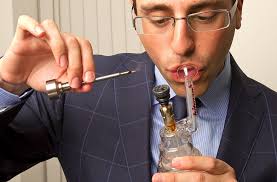
There are several types of BHO and we’re going to look at all of them, however, due to its color and consistency, BHO is also called butane honey oil—after purging the butane, the oil becomes a yellow-gold color similar to honey.
Types of BHO:
There are several different types of BHO, however, all types have similarities in terms of the content, the purging (and extraction) processes and the end result, after it’s smoked, which is to say - the smoker will be very stoned.
Here’s a list of the various types of BHO:
- Budder
- Crumble
- Oil
- Pull and Snap
- Sap
- Shatter
- Wax
Budder
Budder is the purest form of BHO, usually having around 90 percent THC and 99 percent purity. It gets its name because the consistency is somewhat similar to that of butter and it is extremely hard to find as the extraction, purging and whipping process can take much longer than other BHO extracts. Budder tends to be rather rare and expensive but is oh, so good!
Crumble
Crumble is made by purging butane at a low temperature for quite some time (although there is no exact period for this—it depends on the amount being purged—the process usually takes 10 to 15 hours). Since it crumbles easily, it is not good for manipulating with the hands, however, it does add some kick when “crumbled” on top of a pipe load (or bong load)!
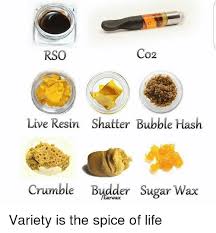
Oil
BHO comes in oil form and this type of extract is mostly seen already packed in cartridges. It is easy to come by and many licensed producers make their own versions. Oil is easy to use in cartridge form and there’s no need to worry about having pieces of the extract sticking to gear. Typically, the cartridge fits into a Vaping device like a Vape Pen, which makes smoking the oil quick, easy and discrete.
Pull and Snap
Pull and snap got its name because of the sound made when pulled apart. It is great for dabbing because of its consistency and because it is easy to handle; pull and snap is much better suited for molding, as it doesn’t break easily or melt in the hand.
On the other hand, if you pulled on a piece of ‘shatter’, it would break in a glass-like manner, hence it’s name.
Sap
Resembling the sap of a tree, this form of BHO is sticky and runny. If a person drops a piece of sap on the floor, for example, it will stick to anything and everything, thereby making it impossible to remove impurities like dust and dirt. This is difficult to smoke without a good dab rig.
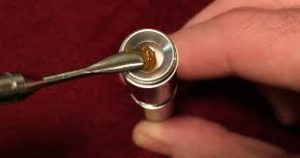
Shatter
Shatter is the hardest form of BHO and is always in solid form. Resembling glass, it is transparent and breaks in a similar manner. Shatter often has around 80 percent THC and requires a dabbing rig to smoke it.
Wax
Somewhat similar to budder, wax doesn’t crumble, but don’t hold it in your hands for too long as it will melt into a sticky mess. Wax is the most common type of BHO seen today, except for maybe shatter, because it is easy to work with. Smoking wax can be done in a dab rig or in a vape pen. Typically, a dab rig provides a surface (known as the ‘nail’) which can be heated so that when you apply the Dab it vaporizes.
CO2 vs. BHO: Comparing extraction methods
Cannabis oil can also be made with carbon-dioxide (CO2), which can serve as the extraction catalyst rather than butane. When cannabinoids are extracted and subsequently processed with CO2, the result is CO2 oil.
BHO extraction
BHO extraction is a risky process and, as such, a job best left to the professionals. There are instances in which people trying to make butane hash oil on their own have been severely injured or even killed.
Why can BHO extraction be dangerous?
BHO extraction uses butane, a flammable gas, as a catalyst to extract all the cannabinoids and terpenes from the plant material. Since part of the extraction process happens over a stove, this increases the risk. The gas takes liquid form in the tube during the extraction process, and then quickly evaporates when heat is applied to the mixture. After it evaporates, heavier-than-oxygen butane quickly “falls on the floor”. This is why making BHO indoors is extremely hazardous.
Why do people dab?
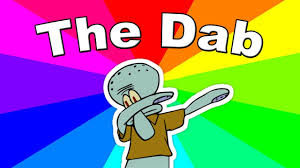 Not talking about the dance craze, which, for those who don’t realize it, is based on the movement folks make when they’ve hit on a dab rig, they wipe their mouth and then … well the pointing upward is because they’re sinking into their couch!
Not talking about the dance craze, which, for those who don’t realize it, is based on the movement folks make when they’ve hit on a dab rig, they wipe their mouth and then … well the pointing upward is because they’re sinking into their couch!
But, we digress. Why do people dab? Another way to think about this is: why do people drink high-proof distilled alcohol? Or drink high-percentage alcohol wine or beer? Or even, for that matter, why do people spin around in circles really fast until they fall down?
Because they want to! On a more serious note, dabs are being demonized as a dangerously powerful drug in those states where cannabis is still illegal, while many smokers in legal states just scoff at dabbing as a sophomoric way to get higher than you need to, sort of like shot-gunning a beer.
However, it’s possible dabs are actually more interesting than they get credit for.
The first thing to consider is that there is evidence which points to them being far healthier than the standard way of smoking weed (but until the DEA reschedules pot, it's very difficult to make definitive health claims about cannabis).
Why? The high you get off a dab is quicker and cleaner than conventional smoking methods, and the dab itself is a ‘cleaner’ version of cannabis, having been processed into the various different forms.
Thanks to modern strains that are 30 times more powerful than 1960s weed (and modern concentrates that can be 90 times more powerful), we no longer need to inhale a quarter of an ounce of burning plant material to get really high. And, that’s a good thing!
So, in summary, dabbing is both a type of cannabis extract (the dab) and a way of smoking cannabis (the dab rig). The action verb “dabbing” means to consume the cannabis concentrate via some type of rig!
And, always remember when it comes to dabs vs weed, a little dab will do ya! You can read more about consuming cannabis in our blog post Beginners Guide to CBD Oils and Tinctures and you can check out all our Cannabis Tours here!
Bachelorette Party Ideas
Bachelorette Party Ideas

Calling all Brides, Maids-of-Honor and Wedding Planners! At Happy Travelers Tours we know the way we travel has changed. We no longer want a generic, one-size-fits-all Bachelorette Bash or Bridal Party. As many bachelorette parties have gone from a simple night of bar hopping to full-fledged weekend getaways, it can be more difficult to plan the perfect way to celebrate your bestie’s upcoming big day.
Happy Travelers Tours strives to take Wine Country Weddings to the next level and while doing so we’ve cultivated the dopest Bachelorette Party ideas sure to get the party rollin!
Check out these customizable trip ideas for your bride that are guaranteed to get the group feeling high on love.
CBD-High Tea Experience
What would be more fun than a British-style High Tea? How about one where everything is CBD-infused! The most memorable Bachelorette Tea Party ever is the Happy Travelers Tours CBD-High Tea. This intimate and delightful experience is provided daily for groups up to 12. Join us at 4:20 in the afternoon for the best Tea Party Ever!
Go Glamping
Have the bride-to-be fall in love all over again where nature meets modern luxury. A fusion of glamour and camping, ‘glamping’ is the comfiest way to authentically experience awe-inspiring nature. Whether it’s a comfy cabin or a lakeside lodge, we’ll come to you for a customizable Cannabis and Camping experience.
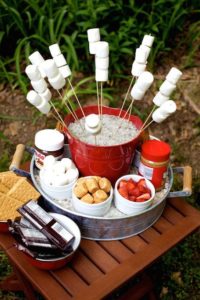
Experience the Great Outdoors
Looking for a view or the best scenery for some #candids? Lace up your hiking boots and invite your girls along for the pre-wedding ride. Get away and enjoy the breath-taking views of California’s mountains, deserts, and national parks. Hiking not your thing? Book a stay at a hot spring, kick back and relax!
However you choose to do it, getting outdoors is well worthwhile!
Take a Wine Tasting Tour or a Cannabis and Wine Tour!
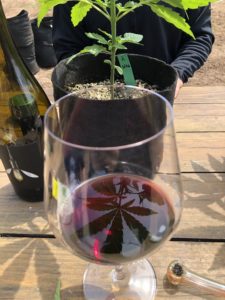
If you’re thinking about a California bachelorette party idea, then why not consider a Wine Tasting Tour. With Happy Travelers Tours, take your gal pals to the highest level on a Wine and Weed Tour, in true California style! Happy Travelers Tours is a premier Wine Country Tour provider in Sonoma. We specialize in providing the best experience at the intersection of wine, weed, and education.
You’ll have to check if the region you’re heading to offers Cannabis Tours and then, get ready to kick back, sip some wine and enjoy some California Cannabis!
Make Your Own Lingerie
Looking for something for a crafty Bride-to-Be? If yes, then, how about a DIY lingerie party? We’ve seen flower crowns and baking, but none are quite as fun as a lingerie party. It’s an intimate party involving the bride’s closest friends, sexy gifts, and lots of giggling.
You can either have an accessorizing party with jewels and gems and “upgrade” some pieces or you can order lingerie making kits and really give your Bride something she’ll treasure beyond her special day!
This idea is ideal for parties in private settings like home and AirBnb rentals!
Chill with a Day Spa
 Celebrate the special moment leading up to your bride’s wedding day with luxurious relaxation and over-the-top fun during your Bachelorette getaway. You and your bridal party can indulge in treatments at one of California’s award-winning Spas! Plan a day in the Wine Country (maybe after one of our Wine and Cannabis Tours) to just chill out, get pampered, and get ready to party during the evening! Enjoy stylish dining options and fabulous local shopping.
Celebrate the special moment leading up to your bride’s wedding day with luxurious relaxation and over-the-top fun during your Bachelorette getaway. You and your bridal party can indulge in treatments at one of California’s award-winning Spas! Plan a day in the Wine Country (maybe after one of our Wine and Cannabis Tours) to just chill out, get pampered, and get ready to party during the evening! Enjoy stylish dining options and fabulous local shopping.
Go Thrill Seeking
We all have a wild friend in the group and we have several options for the wild bride in your life. If you’ve ever wanted bungee jumping or go zip-lining through Redwood trees, why not go do it with all your girlfriends?
It’s sure to give you and your besties stories to laugh at.
If you’re nervous about these kinds of thrills, consider something less risky, like axe-throwing, rage rooms, or even take a group pole dancing class (a fun skill for your honeymoon). Step out of your comfort zone, it’s time to get your last minute thrills!
Reset on a Retreat

Bride Tribe Bonding
Whether you go to a hotel for some down-time and self-care or spice up your day by heading to the ranch to spend the weekend riding horses, a great bachelorette party idea is to spend quality time resetting yourselves with some bestie bonding!
Retreats are a great option for groups of all ages!
Let Loose at a Music Festival
Break out the dancing shoes, Ladies!
Consider a festival! Some are single-day commitments while others are for a full long weekend, which means there is less to schedule for you! There are fests for just about every interest. From Coachella to Lollapalooza to the Russian River Jazz Festival, California has endless options for your bride’s musical tastes! Get the gang together, grab some tickets, book a party friendly AirBnB and go make some life-long memories!
Volunteer: Do Some Good
We’re all about giving back here at Happy Travelers Tours, so, the idea of volunteering as a way to celebrate is one of our top favorites! If the bride-to-be is more of a do-gooder than vodka shooter, think about causes that really mean something to the bride-to-be and spend an afternoon paying it forward. Not only will you make the bride smile, you’ll make new friends and feel good about it!
End the day with good vibes, good karma, and an infused treat or two and keep it going!
Wine and Paint Party

We love interactive and engaging parties. ‘Paint and sips’ are definitely a go-to bachelorette idea for any artsy-bride.
Make a plan for you and your girlfriends to head down to the local gallery and learn something new about your own artistic abilities. For a more low-key bride, a painting party is a creative way to indulge in a glass of wine or a beer (or three or four!) while spending quality time with her gang. In some California locations, you can “Puff, Puff and Paint” as well!
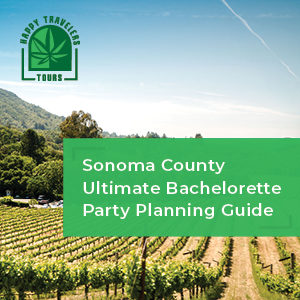 Download the Ultimate Bachelorette Party Planning Guide!
Download the Ultimate Bachelorette Party Planning Guide!
We’ve put together some great ideas to help inspire your Ultimate Bachelorette Party, including a Three-Day Bachelorette Party itinerary for your consideration!
A “Love” Note from Happy Travelers Tours about Bachelorette Events
We know how important your Bachelorette Weekend is – you want the best memories and the unique experiences! At Happy Travelers Tours, our mission is to make your Bachelorette Event as special as your wedding day. Whether you decide on our Sunset Tour, to watch the sunset into the Pacific Ocean or our Wine-and-Weed Tour where you visit our amazing mountain top cannabis grow, we provide the customizable extra touches which make for a Perfect Day!
Our Bachelorette Events include special Swag Bags and these add-ons are available:
- “Bride’s Bubbly“ Champagne addition
- A “Bride's Choice” Cake from our delicious catering partner, SweetPea Bakery
- We also offer the option of cannabis-infused foods!
We’re based in the beautiful city of Sonoma, right off the Square. If you’re interested in one of our Bachelorette Party Events give us a call at 707-386-9859 or send us an email at: [email protected]